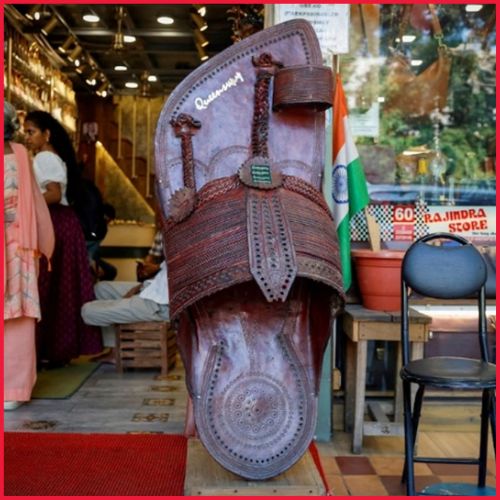We are frequently asked if e-commerce or retail is better for a business. E-commerce is a business model that allows individuals and businesses to offer their services or products through the internet. Retail, on the other hand, refers to brick-and-mortar enterprises in which individuals sell their goods or services from person to person in stores, malls, and neighborhoods.
According to Statista 2021, total retail sales, including online and offline, amounted to 24.2 trillion USD, with the brick-and-mortar retail channel accounting for 19.1 trillion USD and the eCommerce sales channel accounting for about 4.9 trillion USD. In the same year, worldwide retail sales increased by 9.7% overall, with eCommerce accounting for around 19.6% of total retail sales.
During this epidemic, the digital form of commerce has grown significantly. However, the significant money created by retail cannot be overlooked. In this essay, we will go through many considerations that will help you decide which is ideal for your business: eCommerce or retail.
Shopping, in some form or another, is one of the trademarks of a functional society. It is both essential and luxurious, cathartic and enjoyable. While shopping has been around for as long as history, the manner we shop is continually evolving and changing. Shopping evolves in lockstep with technology, and there appears to be no stop in sight.
The future of shopping is probably more exciting and unclear than ever before, given the millions of options provided by recent technological breakthroughs. The last decade of technology has revolutionized how we live our lives, and the shift in how we shop and will continue to shop is just getting started.
So, what does the future of shopping hold? We may begin to predict what lies ahead for this most popular pastime by learning more about retail, e-commerce, and how shopping has changed in 2018.
What is the procedure for retail sales?
Retail sales occur in actual stores. Large retail chains, such as shopping malls and grocery stores, are examples of brick-and-mortar retail, as are smaller, independently owned enterprises (think pop-up shops and farmers’ markets). Retail stores operate on a supply chain business model, and they are the final link in that network before the items or services reach customers. Goods pass from the producer to the wholesaler to the distributor to the brick-and-mortar retailer to the customer.
How do online sales work?
Digital sales are referred to as eCommerce sales. Online purchases can be conducted through eCommerce businesses or social media. Ecommerce company models often have fewer stages in their supply chain than their retail equivalents. This is because internet businesses have more alternatives for stocking and transporting their products. Dropshipping and direct-to-consumer are two of the most prevalent approaches (DTC). Dropshipping is a method of selling things that are stocked and sent to customers by a third party. Direct-to-consumer refers to the sale of goods directly to customers without the intervention of wholesalers or third-party merchants.
- For customers, retail vs. e-commerce
Shopping in a store is going to a specific physical place, exploring things, purchasing with the assistance of a salesperson, and then carrying the goods home. Shopping online, on the other hand, provides several possible access points. A shopper can go directly to a favorite online merchant or discover a new store online through a digital marketing campaign or a social media recommendation. They then look for the things they desire, compare prices, buy them, and wait for them to be delivered to their home. The best fit is determined by the sort of shopping experience preferred by the consumer, the amount of customer service interaction wanted, and which shopping experience is most convenient for the customer’s lifestyle.
- For enterprises, retail vs. e-commerce
Choosing between retail and eCommerce sales relies on what you’re selling and who you’re selling to. There is a significant difference between a single person selling a few things on their own and a larger, more established corporation selling hundreds of products to a well-established customer base. Understanding unique considerations for your business, such as the initial cost of investment, the breadth of business operations, and the potential to sell items through different channels, may help you decide between retail and eCommerce.
- For Operations
How they’re alike: Both physical businesses and online stores rely on business operations to keep inventories and costs in check.
What distinguishes them: Manual labor is often required in brick-and-mortar establishments. And the costs of recruiting workers, keeping inventory and space, and dealing with variations in supply and demand all mount up.
Ecommerce retail operations, on the other hand, maybe largely automated using a range of eCommerce solutions. These solutions aid in the automation of duties ranging from day-to-day inventory management to seasonal digital marketing campaigns.
Which has a lower level of prior investment?
Ecommerce
Starting an eCommerce business may appear to be an expensive process, but with the right preparation and execution, it is possible to get started on a budget. The investment necessary to launch an eCommerce firm in India is between 5 and 10 lakh rupees. It comprises the creation of your company’s website, hosting, domain registration, sales, and administration tools, web development, and advertising.
Retail
Investment in the establishment of a retail business can be costly. Before selling its product, a retail business must invest in a variety of items. These include building, purchasing, or renting a store, paying licensing fees, recruiting workers for various roles, paying site tax, investing in stocking the store with enough things to attract customers, and other business and government resources. All of these costs make opening a physical store significantly more expensive than opening an eCommerce store.
As a result, the cost of investment in eCommerce is lower than in retail. The benefit of operating an eCommerce business is that it saves the expense of opening a physical store or paying delivery personnel. This is because eCommerce retailers send their manufactured items to fulfillment centers such as Amazon, FedEx, Ship Bob, Flipkart, and others. Following that, it is up to these branches to pack, track, and ship the order to the buyer.
Which is easier to keep up with?
Ecommerce
When compared to a traditional business, eCommerce is easier to manage. However, several issues must be addressed regularly for the business to function properly. For example, you may need to have a warehouse or other suitable place to keep the items secure and accessible for dropshipping. Because you are not in direct contact with your clients, you must rely on analytics to follow their experiences and uncover their new likes and preferences. You will also need to keep an eye on the date of product delivery to avoid unfavorable consumer feedback.
Retail
In terms of upkeep, the retail industry is seen to be a little more challenging. This is due to a variety of factors, including the necessity to maintain a functional brick-and-mortar store and inventory, as well as the requirement to maintain an acceptable communication balance on both sides in real-time with suppliers and consumers. You should also keep an eye on your employees to see if they are treating consumers nicely. You will need to teach them and make them more aware of the services and goods you provide so that they can interact with clients pleasantly and correctly.
It is simpler to update the inventory in an eCommerce store. This work gets more challenging in retail establishments since upgrading merchandise necessitates scheduling meetings with suppliers regularly. As a result, eCommerce is a superior solution for your organization in terms of simplicity of upkeep.
Which will be more profitable in the future?
Ecommerce
With eCommerce comes a significant advantage: unfettered consumer access. There is no limit to the number of individuals you can reach once you are connected to the internet. Ecommerce allows you to expose your products and services to a huge number of people, thus there are no geographical limitations. Furthermore, you may always use clever and innovative marketing strategies to promote your business and attract new consumers. These include providing free delivery, discounts, gift cards, and reward points, among other things. All of this ultimately leads to more sales and, consequently, higher profitability.
Retails
Retail stores have limited consumer access owing to their fixed position. This is not to say that a retail store is without value. Even today, many clients are not pleased until they can touch and feel the merchandise. As a result, customers who are still dubious about internet buying contribute to retail establishments’ sales and earnings. Furthermore, there are fewer risks of online fraud with retail businesses because the consumer does not need to submit personal information such as emails, cellphone numbers, bank data, and so on. eCommerce will be the clear victor in this situation since the items and services of eCommerce businesses are visible to a big audience, resulting in a large potential client base and hence more sales and profits.
What is the distinction between retail and e-commerce?
In the most basic sense, retail and e-commerce appear to be extremely similar: both relate to what happens when a product from a business is sold to an individual customer for their personal use, with the exception that one is done solely over the Internet. Retail may be done in a variety of methods, including in a physical location such as a shopping mall or grocery store, online, person-to-person sales, and even direct mail.
In contrast, e-commerce refers to business transactions that are predominantly conducted electronically over the Internet. There is something known as “retail e-commerce sales,” which are the sales of products and services via the Internet via an extranet, Electronic Data Interchange (EDI), or other comparable online systems. Many retailers now operate midway between brick-and-mortar retail and e-commerce. Traditional retail, or the shopping experience in which you travel to a specific institution to buy an item or service, is very much alive and well. This most basic kind of purchasing will very certainly continue to exist.
However, many shops have both a physical storefront and an online presence. Consider places like Target, Walmart, and Forever 21. Each of these locations may be visited and shopped via their online platforms, or you can go to the local store and wander around. While internet shopping is popular and has grown in popularity over time, this does not indicate that brick-and-mortar establishments such as shopping malls, grocery stores, and convenience stores are becoming outdated. On the contrary, both media continue to thrive. Simply put, the world’s buying habits have evolved, resulting in an ever-changing future as technology evolves.
How shopping has changed already: Online purchasing is on the increase.
There are already some extremely futuristic features of shopping today that may be considered the basis for where shopping is heading in the future. The Internet, applications, advertisements, online reviews, brands, and cloud-based software have all changed the way we purchase. In fact, without cloud-based inventory software like that supplied by Finale Inventory to keep their inventory organized and efficient, small e-commerce enterprises would struggle to stay alive.
This convenience makes internet shopping appealing to many customers, and it also plays into their need to acquire specific information before making a purchase. One of the most noticeable distinctions is that customers are extremely well-informed about what they buy, which reduces the need for salespeople and ladies. To explain, customers may use their smartphone, laptop, or tablet to look for products and other items online, read reviews about them, compare costs, find the nearest store or pick the best online merchant, and ultimately make their purchase.
One of the most significant changes in shopping in recent years has been the ease of access, with the Internet playing a significant influence in how consumers search and purchase products. 20% said they purchase online at least once a week.
According to the report, 42 percent of US buyers seek for and buy products and services online, while 14 percent actively search for a product online before purchasing in a store. To take things a step further, customers can track their shipments, get expected delivery dates, and even handle returns online. Consumers are even more inclined to purchase online than in physical stores with the inclusion of promotions, discounts, coupons, and Groupon. Ads can be seen on your Facebook page, in Google searches, in your Instagram feed, and elsewhere, alerting you to excellent online offers and discounts that are only accessible online.
Recommendations, advice, and evaluations from friends, family, and followers are additional simple methods to find bargains online, making this manner of buying by far the easiest and most streamlined. Furthermore, “mobile commerce” is growing in popularity in the United States. While most customers use laptop computers for internet browsing and purchases, smartphone shopping is becoming increasingly popular. This is mostly because mobile phones are much more accessible to most people than laptop computers. After all, they are always with us and we are practically always using them.
In addition, many businesses and online retailers have updated their website interfaces mobile-friendly, making it easier than ever to purchase online by smartphone. These components of online shopping are undoubtedly laying the groundwork for what is to come, with omnichannel retail being the most recent new development on the horizon.
Moving forward: Omnichannel retail and beyond
Omnichannel retail is the next natural step for many businesses in terms of growing sales, developing customer connections, and generating income. Omnichannel retail is a multichannel approach to selling. It seeks to give clients a simple and quick purchase experience, allowing them to shop from anywhere, whether on their laptop, smartphone, tablet, or at a physical store.
One appealing feature of the omnichannel design is that customer service agents may recall a client’s preferences and purchases from their previous transactions with the company. This helps the salesperson to better understand the consumer and provide items or services that meet their specific wants and needs. This data is important for directing the client to their next purchase while also offering them some liberty, whether online or in person. Customers may check a firm’s shop inventory via the corporate website using their computers or phones, allowing them the choice to purchase in-stock products, save them for later, or purchase them online and pick them up in-store.
In addition to providing the consumer a say in their buying and demonstrating that they are an important part of your process, omnichannel retail has several advantages for businesses. Some examples are:
- More Efficiency: Omnichannel retail tactics bring uniformity to the customer purchasing experience across all platforms for both new and returning customers. It also enables a company to be prepared to answer its customers’ inquiries, demands, and concerns, owing to a centralized database of items, pricing, offers, promotions, and other information.
- Better Data Collection: A more tailored client experience is more enjoyable. Treating your consumers as statistics rather than individuals may quickly backfire, making your company impersonal and untrustworthy. When your customers’ experiences are more individualized, they inevitably receive greater service and retention.
- Data Analysis and Communication Integration: Having different communication channels gives your company access to a variety of information streams, resulting in improved communication with consumers, buyers, suppliers, and others. Data streams are critical for knowing what customers want and want. Analytics interprets data streams so that you may analyze, measure, and review interactions, thereby improving human relationships with clients.
Conclusion
The future of shopping will undoubtedly be digital, but that doesn’t mean it will look too different from what we’re used to. The crucial thing to remember is that no matter how shopping evolves, some things will remain constant: data attention and analysis, customized interaction with your clients and consumers, and efficient company administration.
We evaluated e-commerce and traditional establishments based on investment, ease of performance, and earnings. Although several reasons make retail stores superior to eCommerce sites, such as trusted quality and personal interaction. However, after doing an overall comparison and considering the digital world’s future, we decided that eCommerce stores are the greatest method to build your business and generate more profit in the future since they provide a larger reach with less investment.
However, you may also choose omnichannel retail, which allows you to buy things both online and in physical locations, ensuring that your clients are delighted in every manner imaginable.
FAQs
What’s the distinction between eCommerce and retail?
Retail is something that can be done in a physical store, online, amongst people, or by direct mail. eCommerce, on the other hand, refers to electronic commerce, which signifies business transactions that are solely done over the internet.
How is running an internet store superior to owning a physical store?
Online business owners may sell and distribute their products and services to a wide number of people with fewer investments since purchasing a website is easier and less expensive than purchasing a physical store.
What is eCommerce’s most difficult challenge?
The problem of security is one of the most serious difficulties that eCommerce faces. Ecommerce contains a tremendous number of personal information, and even minor technological issues can have a significant impact on a company’s operations and reputation.
What exactly is a retail store?
The most popular type of retail store is the traditional brick-and-mortar store, such as Walmart, Best Buy, and so on. However, retailing as a whole covers the sale of products or services via storefronts, kiosks, or even the internet.
What is the distinction between retail and e-commerce?
The selling of items at a physical location where the vendor and customer interactions in person are known as retail. E-commerce, on the other hand, is the sale of things through the internet in a digital environment.
Is Amazon an e-commerce site?
Amazon is classified as an e-tailer since it sells things mostly online.
What exactly is retail e-commerce?
E-commerce (also known as e-commerce retail or e-tail) is the purchase and selling of items through the internet.














